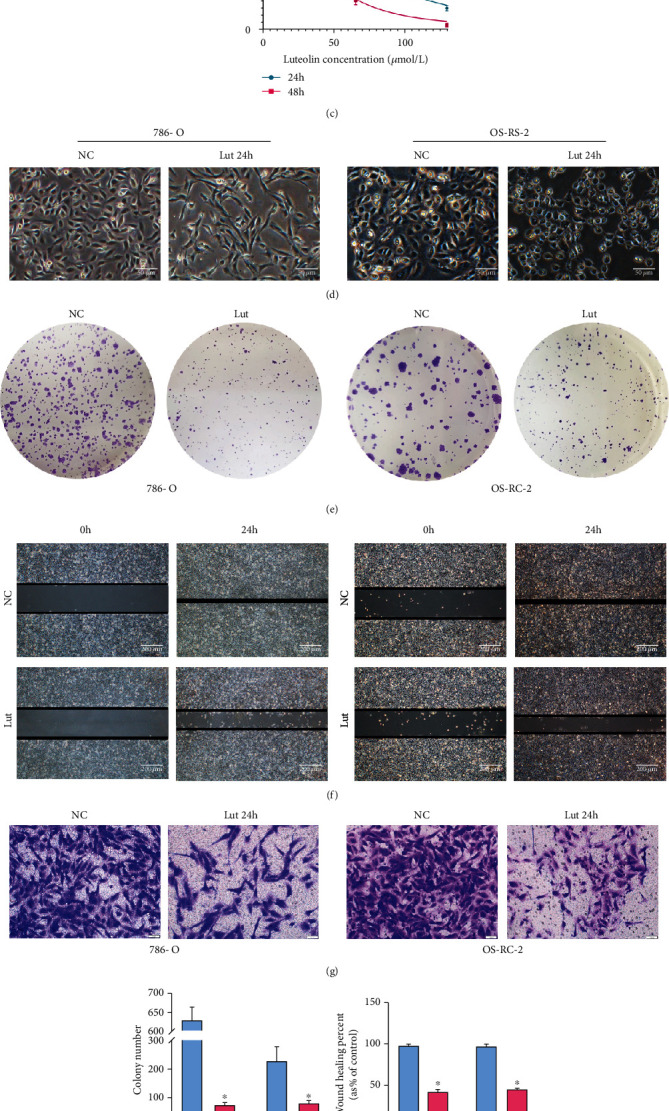Figure 1.

Lut inhibited ccRCC proliferation, migration, and invasion in vitro. (a) Chemical structure of luteolin. CCK-8 assay showed that Lut inhibited the viabilities of 786-O (b) and OS-RC-2 (c) cells in a dosage- and time-dependent manner. (d) Morphological changes of 786-O and OS-RC-2 cells treated with or without Lut for 24 h (magnification, ×40). (e) The colony formation assay of 786-O and OS-RC-2 cells treated with or without Lut for 14 days. (f) The wound healing assay of 786-O and OS-RC-2 cells treated with or without Lut for 24 h (magnification, ×40). (g) Transwell invasion assay of 786-O and OS-RC-2 cells treated with or without Lut for 24 h (magnification, ×200). Semiquantification of colony formation assay (h), wound healing assay (i), and Transwell invasion assay (j). The data in (h), (i), and (j) are expressed as the mean ± SD. ∗P < 0.05 vs. the NC group. NC: negative control; Lut: luteolin.
